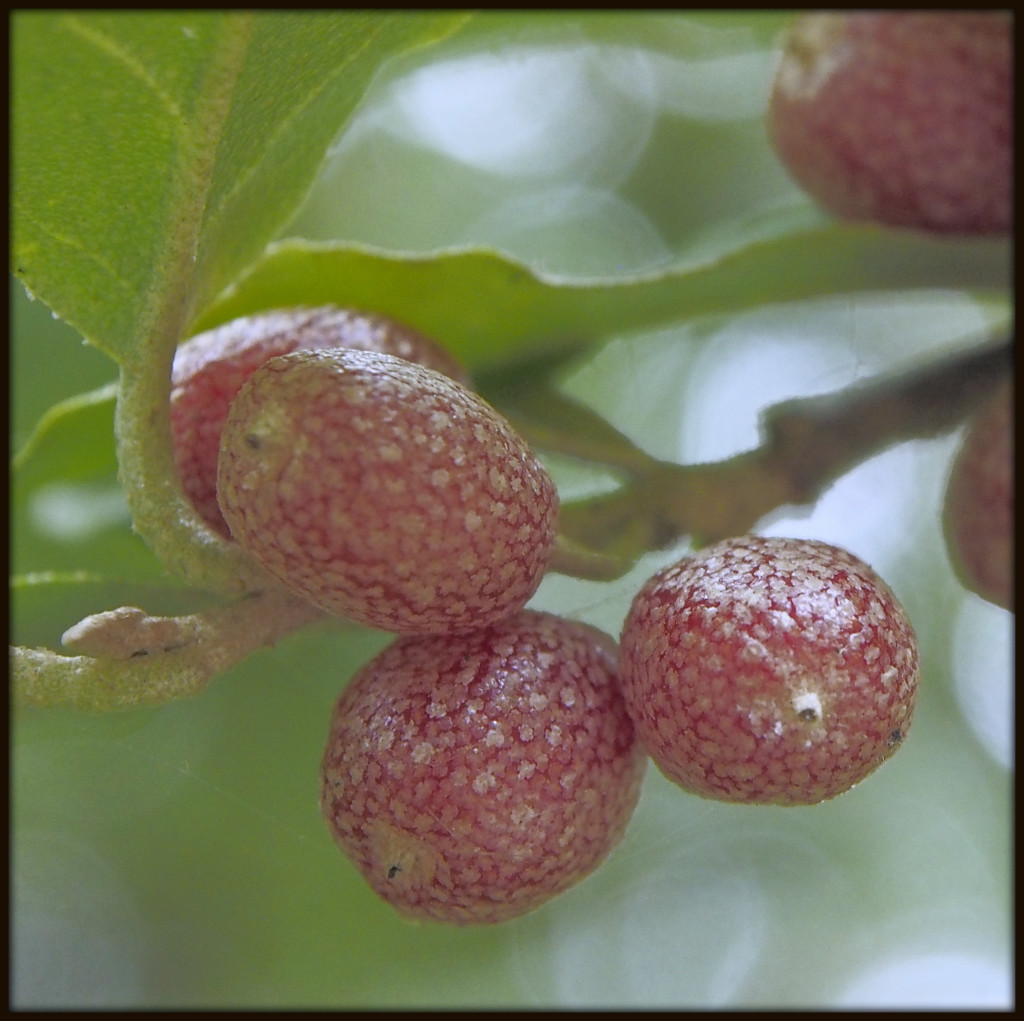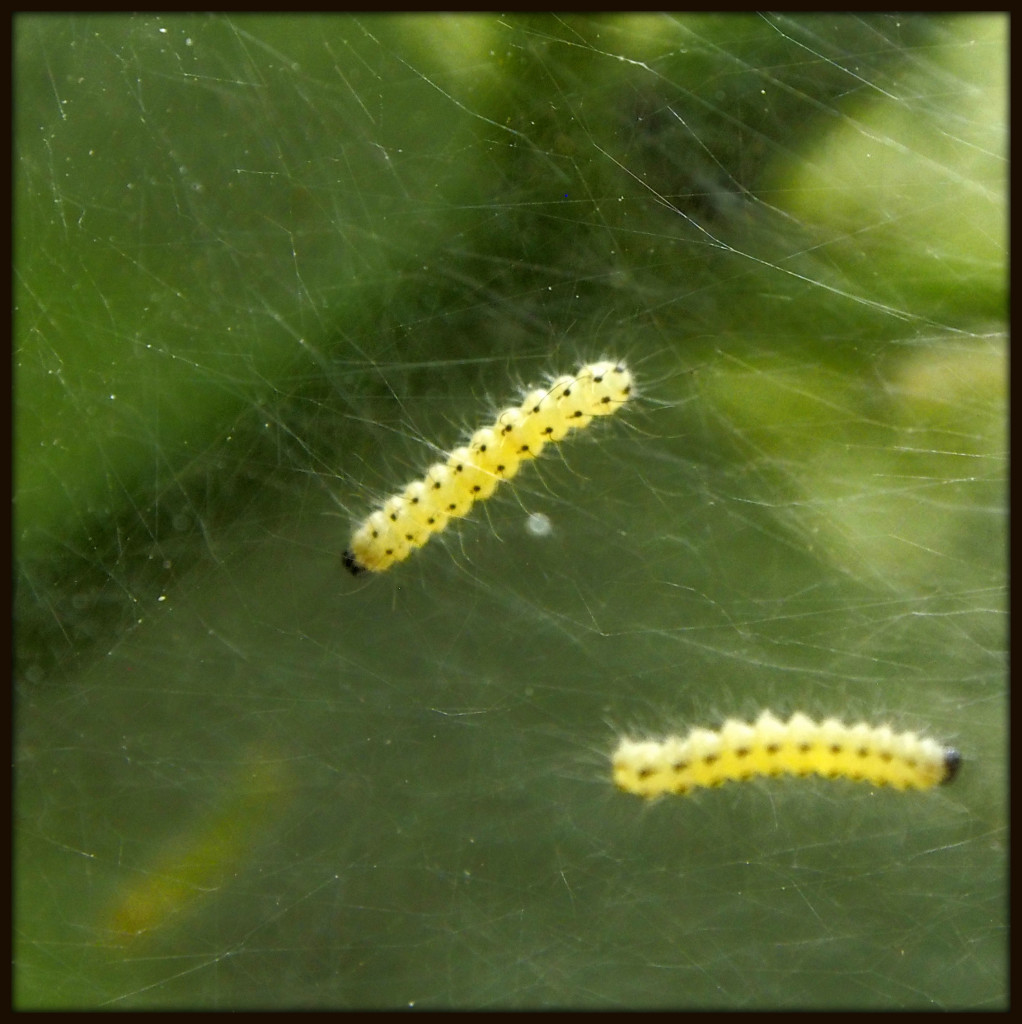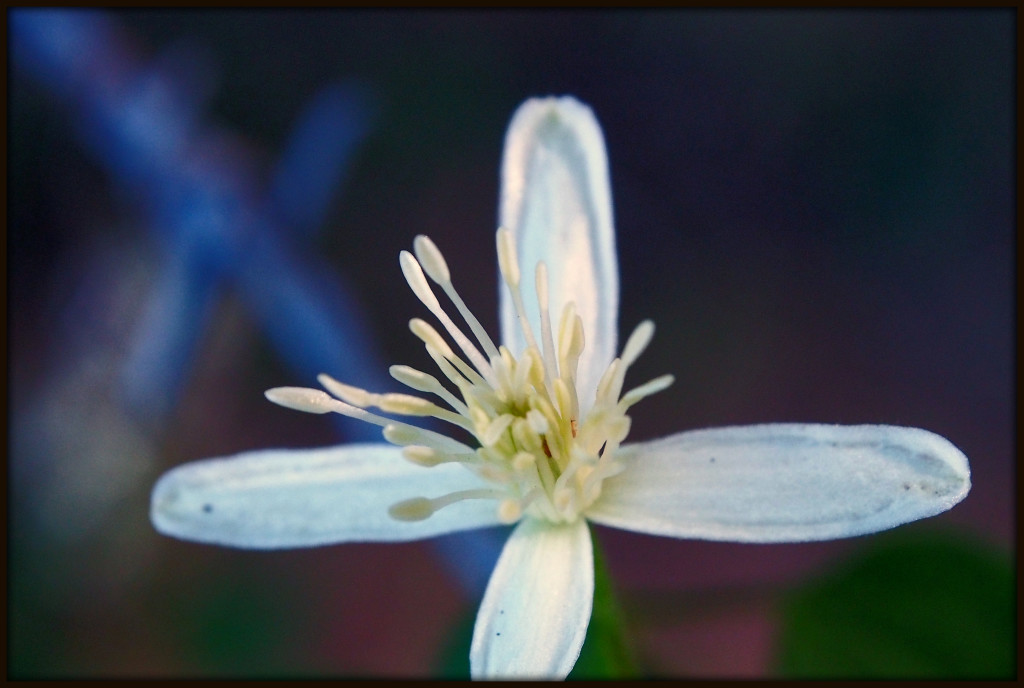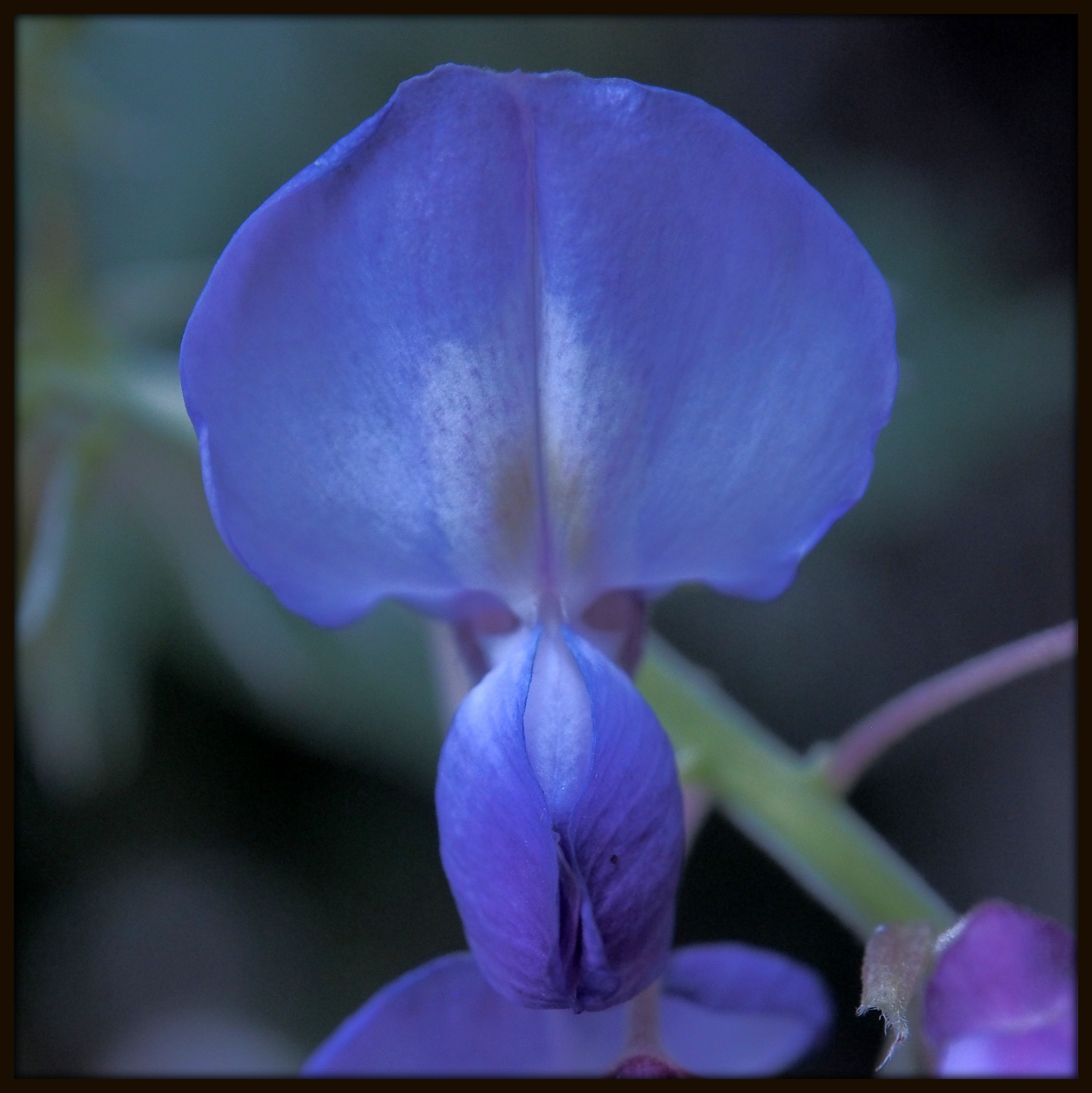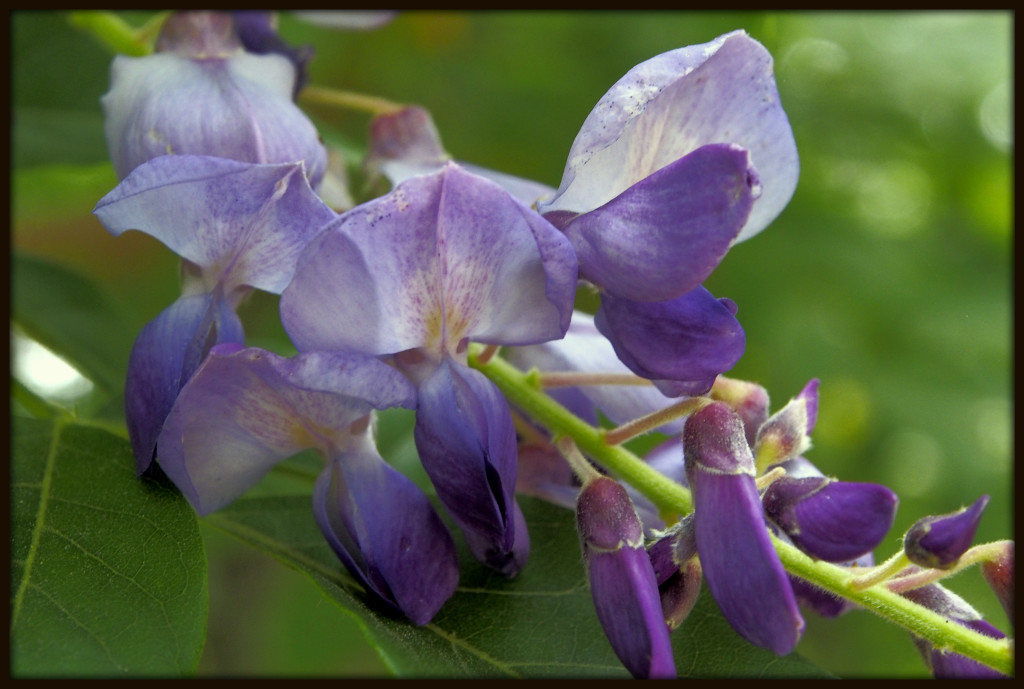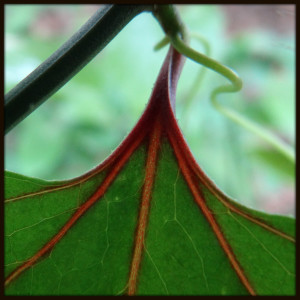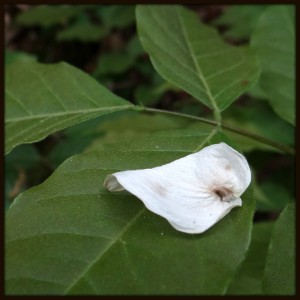On an overcast early evening with just a hint of drizzle, I set out on my daily exploration of Piney Woods Church Road. I was not inspired by the diffuse lighting, no matter how often I have read that cloudy days are supposedly beloved by macro-photographers. And for a second time in two days, I found myself photographing ripening berries of a Chinese Privet shrub (Ligustrum sinense). They add splashes of red to the landscape, I grant that. But they also carry the progeny of what is among the worst invasive plant species in the Piedmont of Georgia. Each little berry is a future privet plant, choking out native vegetation wherever it grows, from road edge to the forest’s heart. While I was able to find some beauty in the privet flowers in the springtime, berries are another matter entirely.
A short distance down the road from the privet horde, several cherry saplings were partially covered in web tents. A number of skeletonized leaves hung like white veils, their life-force converted into the ever-growing bodies of Fall Webworms (Hyphantria cunea). Inside the tents, tiny pale yellow caterpillars with black spots were gathered — in places, clustered by the dozens, and in other spots, further apart. As their name suggests, Fall Webworms actually do most of their damage later in the season, when the caterpillars are much larger. Already, though, there are several tents on each of a half-dozen trees in the immediate vicinity, including a persimmon in our backyard. Fall Webworm tents get much bigger even than those of Eastern Tent Caterpillars, with which I was already familiar. Unchecked, they can even defoliate entire trees. Oh, well. At least they aren’t actually invasive….
For today’s post, I bring both images together. If there is anything that one might classify as evil in the local landscape, it is embodied in the Chinese Privet and the Fall Webworm. I am working hard on appreciating these two. After all, they are both quite common now, and I have resolved to celebrate the commonplace in nature. I haven’t gotten there yet, but I haven’t given up, either. I suspect that both the berries and the caterpillars provide food for songbirds of some kind, and that’s a start. And at least they also offer the prospect of bad puns….
